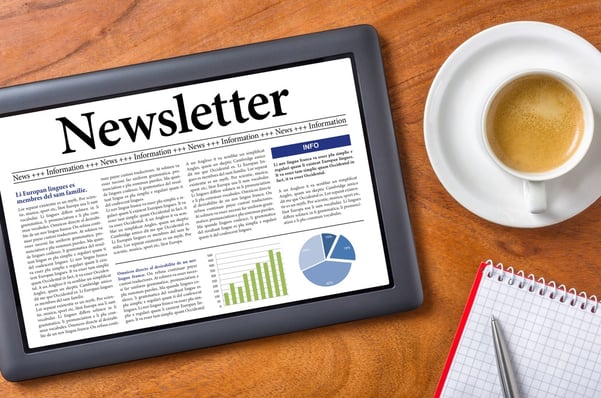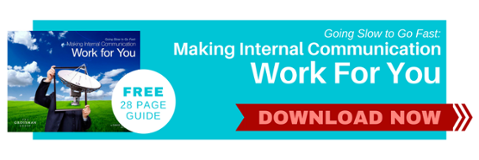10 Steps to Create An Employee Newsletter That Delivers

Innovation is often powerful when it comes to communications, and so is the tried and true. A printed or electronic newsletter can be an effective means of breaking through the clutter by bringing timely and valuable information to employees where they’re at – whether that’s in front of a computer, on a mobile device, or in the field.
Well-Crafted Newsletters are Appreciated by On‑the‑go Teams
Today’s on-the-go teams will appreciate newsletters that gather the most critical information in one place, and in a reader-friendly, highly visual, accessible format. The best employee newsletters are concise and engaging, providing readers with what they want to know along with the information they need to do their jobs effectively. That means helping employees understand business goals and how those goals connect to the organization’s overall vision and strategy. Additionally, an effective employee newsletter reinforces the culture of the organization while inspiring employees and strengthening morale. How can you do all of that in a single tool?
Consider the following techniques:
- Recognize people and teams for their hard work and accomplishments.
- Encourage user-submitted content that helps readers to feel invested.
- Highlight notable events and milestones in an easily scannable format.
- Include interesting, high-quality graphics and imagery that draw in readers and help to visually tell the story.
- Provide an education or training component to support professional development.
So now you understand the critical role a newsletter can play in advancing your overall employee communications efforts and you know the kind of information that should go into each newsletter, but how do you get started? Follow these steps to bring your vision to reality…
10 Steps to Consider
1. Decide the overall role of the newsletter in your communications system. How does the newsletter fit with your other vehicles, and what role does it play? Given that, what’s the timing then that makes the most sense to drive the outcome, “information I need to do my job well?” Many organizations publish newsletters on a quarterly or monthly basis.
2. Identify an editorial board and/or news team who will regularly identify topics and help to develop the content.
3. Select your first theme. What important issue or concern do you want to highlight? Which topics do your team members need to understand better? For example, you may want to focus on safety, efficiency, a new company strategy, your quarterly results, or a new behavior or action you need from team members to drive continued results.
4. Craft a leader message that underscores the importance of the monthly theme or topic. This only needs to be two or three paragraphs – concise and to the point.
5. Recognize great work among your team in a regular section highlighting team member contributions. Write profiles or Q&A interviews with the people you are featuring.
6. Compile your quarterly calendar that will include important upcoming meetings and events.
7. Gather brief news and announcements to share. Consider creating an email address or submission box where employees can share ideas for inclusion in future editions.
8. Find a newsletter template online or available through software programs already on your computer.
9. Determine your distribution plan. Will you print and distribute the piece or email, or perhaps both? You may want to print color copies and leave stacks in centralized locations throughout the company. Or if you are creating a digital newsletter, be sure to add links, videos and opportunities for team members to share comments and feedback.
10. Create an editorial calendar that plots themes and timing for future topics. This will help you stay a step ahead and ensure future ideas don’t get lost in the shuffle.
Which of the steps might help you fine-tune your plans?
—David Grossman
Click below to download the eBook—Going Slow to Go Fast: Making Internal Communication Work For You—and learn how to navigate the core challenges that today’s communicators face—download today! 

Comments on this post